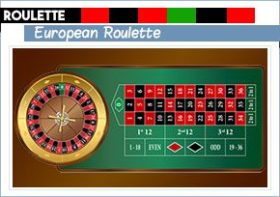Roulette Systems: Can They Beat the House Edge?

Roulette is one of the most popular casino games, known for its fast-paced action and exciting potential for big wins. However, it’s also renowned for its inherent advantage – the house edge. Many players have tried to develop various systems and strategies to beat this edge. In this article, we will explore the different roulette systems and analyze their effectiveness in reducing or eliminating the house edge.
Understanding the House Edge
The house edge in roulette is primarily determined by the presence of the green “0” (and “00” in American roulette) pocket on the wheel. This extra pocket increases the odds for the casino to win, as all bets except for those specifically wagered on the green pocket(s) lose.
The Martingale System
The Martingale system is one of the oldest and most well-known roulette systems. The strategy involves doubling your bet after every loss, with the aim of recovering all previous losses plus making a profit equal to the initial wager. While this system may seem foolproof in theory, in practice, it requires a large bankroll and an unlimited betting limit to be effective. Additionally, encountering a long losing streak could quickly deplete your funds.
The Fibonacci System
The Fibonacci system is based on the famous sequence of numbers where each number is the sum of the two preceding ones (1, 1, 2, 3, 5, 8, etc.). In roulette, this system involves betting the sum of the two previous bets. The goal is to win enough consecutive bets to make a profit without risking a significant amount of money. However, like the Martingale system, the Fibonacci system is not foolproof and can run into issues when encountering a losing streak.
The Labouchere System
The Labouchere system, also known as the cancellation system, requires players to write down a sequence of numbers that represent the desired profit. Bets are placed by adding the sum of the first and last numbers in the sequence. If the bet is won, these numbers are crossed out. If the bet is lost, the sum of the lost bet is added to the end of the sequence. The goal is to eventually cross out all numbers and achieve the desired profit. While this system can be successful in the short term, it can be risky and complicated to implement.
The D’Alembert System
The D’Alembert system is a simple and relatively low-risk strategy. It involves increasing your bet by one unit after a loss and decreasing it by one unit after a win. The goal is to achieve a balance between wins and losses over time. However, this system’s effectiveness is limited due to a slow progression of bets, making it less suitable for those aiming for quick and substantial wins.
Conclusion
While numerous roulette systems claim to beat the house edge, it’s important to remember that no system can guarantee consistent winnings. The house edge is a mathematical advantage that casinos have, and strategies may only provide short-term benefits. Additionally, casinos have countermeasures to prevent system abuse. So, while roulette systems may add an element of excitement and strategy, players should approach them with caution and never risk more than they can afford to lose.

